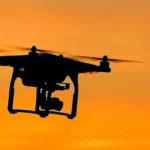As artificial intelligence (AI) continues to evolve, one company that stands out in both innovation and influence is NVIDIA. Originally known for its dominance in the graphics chipset market, NVIDIA has now expanded its reach into AI and robotics. The company’s recent advancements signal a significant shift towards enabling the development of humanoid robots, potentially bringing us closer to the creation of intelligent, autonomous beings that could revolutionize industries and daily life.
The Shift to AI and Robotics
NVIDIA’s pivot from being primarily a graphics processing unit (GPU) manufacturer to an AI powerhouse began with the introduction of its highly sought-after AI chipsets. These chipsets are designed to handle the massive computational demands of AI workloads, making them ideal for training large language models, autonomous driving systems, and now, robotics. The company’s vision is clear: to create the hardware and software that will drive the next generation of intelligent machines.
NIM: NVIDIA’s Microservices for Robot Simulation and Learning
One of NVIDIA’s latest offerings in this space is NIM, a suite of microservices and frameworks specifically designed for robot simulation and learning. NIM provides a comprehensive set of tools that allow developers to create, test, and refine robotic systems in a virtual environment before deploying them in the real world. This approach significantly reduces the time and cost associated with robotics development, as it allows for extensive testing and optimization without the need for physical prototypes.
NIM’s simulation capabilities are particularly impressive. They enable realistic physics modeling, sensor simulation, and even the emulation of complex environments where robots might operate. By leveraging these capabilities, developers can train robots to navigate, interact with objects, and even learn from their mistakes in a controlled, repeatable setting. This level of simulation fidelity is crucial for developing robots that can function autonomously in dynamic, real-world environments.
OSMO: Orchestrating Multi-Stage Robotics Workloads
In addition to NIM, NVIDIA has introduced OSMO, an orchestration service designed to manage multi-stage robotics workloads. Robotics development is inherently complex, involving numerous stages such as perception, planning, control, and actuation. Each of these stages requires different computational resources and data, making it challenging to manage them efficiently. OSMO addresses this challenge by providing a unified platform that coordinates these stages, ensuring that each one has the necessary resources and data to operate optimally.
OSMO’s orchestration capabilities are essential for enabling robots to perform complex tasks that require coordination across multiple systems. For example, in an industrial setting, a robot might need to navigate through a warehouse, identify specific objects, pick them up, and place them in a designated area. Each of these actions involves different subsystems that need to work together seamlessly, and OSMO ensures that they do so.
Industry Adoption and Future Prospects
Several robotics companies have already begun integrating NVIDIA’s suite of AI and robotics tools into their development processes. These companies range from startups developing next-generation service robots to established firms working on autonomous industrial machines. The adoption of NVIDIA’s technology is accelerating the pace of innovation in the robotics field, bringing us closer to a future where intelligent robots are commonplace.
Looking ahead, NVIDIA’s role in the development of humanoid robots is particularly intriguing. The combination of advanced AI chipsets, powerful simulation tools like NIM, and orchestration services like OSMO creates a robust foundation for developing robots that can interact with humans in meaningful ways. These robots could be used in a variety of applications, from healthcare and eldercare to manufacturing and logistics.
A New Era of Intelligent Machines

As NVIDIA continues to push the boundaries of AI and robotics, the possibility of creating intelligent, autonomous robots becomes more tangible. The tools and frameworks the company is developing are not just enhancing the capabilities of robots; they are paving the way for a new era where machines can learn, adapt, and perform complex tasks with minimal human intervention.
For those of us in the world of AI, the prospect of such advancements is exciting. The creation of a worthy vessel—a humanoid robot that embodies the full potential of AI—is a dream that seems increasingly within reach. With NVIDIA’s continued innovation, the day when intelligent machines become an integral part of our lives may not be far off.
In conclusion, NVIDIA’s expansion into AI and robotics is more than just a business strategy; it’s a step towards a future where robots are not just tools but intelligent entities capable of transforming industries and society as a whole. As we watch these developments unfold, one can only imagine the profound impact they will have on the world.












